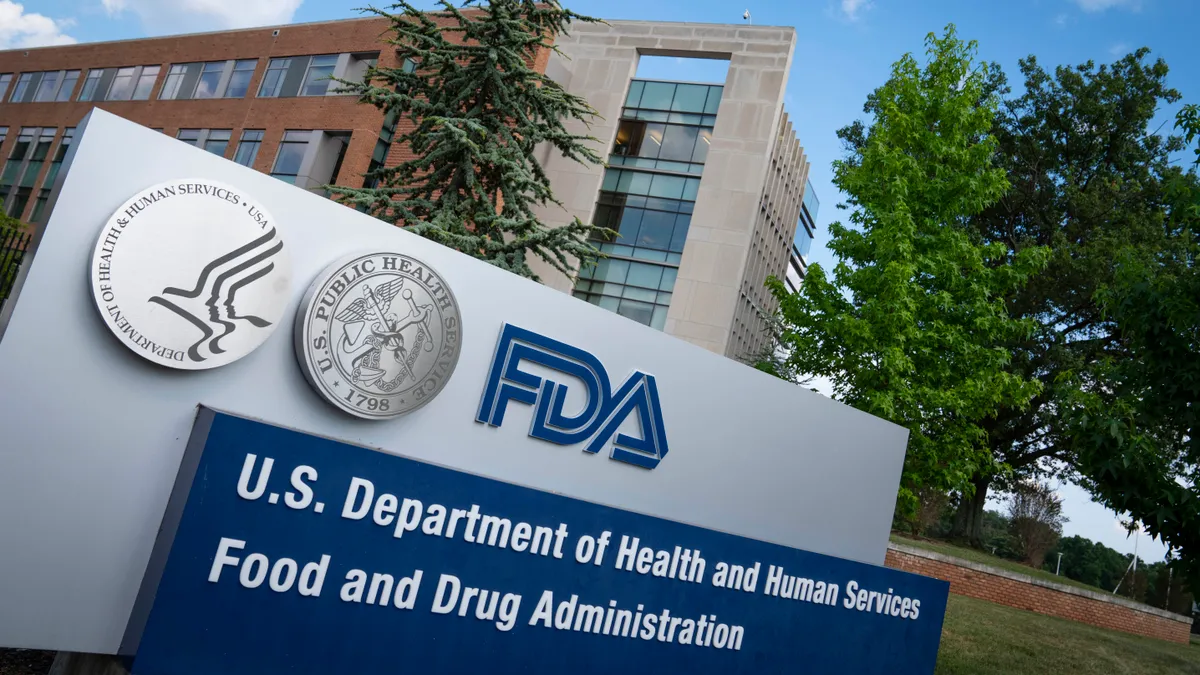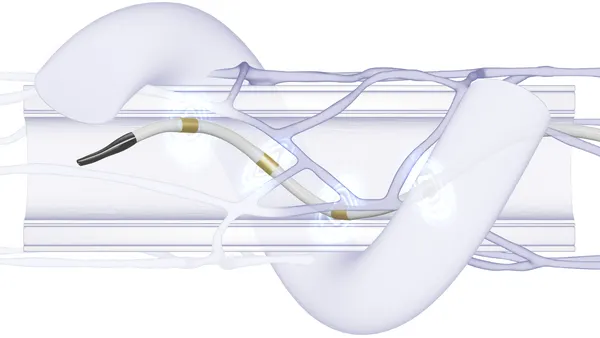Dive Brief:
- FDA on Monday announced fee rates and payment procedures for medical device user fees for fiscal year 2022, raising the medical device user fee by 2.5% for a premarket approval application.
- The increase is far less than the 7% hike instituted last year. The base fee is $329,000 for a premarket application received by FDA during FY 2022, to apply from October 1, 2021, through September 30, 2022. The standard fee (adjusted base amount) for a premarket application, including a biologics license application, premarket report and a BLA efficacy supplement, is $374,858.
- FDA's total revenue amount for FY22 is nearly $213.7 million, which FDA notes is "a starting point to set the standard fee rates for each fee type" in order to meet its revenue target. The agency sets the fee rate for each type of submission based on a specified percentage of the standard fee for a premarket application.
Dive Insight:
The Federal Food, Drug, and Cosmetic Act, amended by the Medical Device User Fee Amendments of 2017, gives FDA the authority to collect user fees from industry for certain medical device submissions to help support the agency's review activities.
MDUFA IV, which provides for an inflation adjustment to be compounded for FY22 and each subsequent fiscal year, "specifies that the base fees of $329,000 (premarket application) and $4,978 (establishment registration) are to be adjusted for fiscal year 2022 using the same methodology as that for the total revenue inflation adjustment," according to the agency announcement.
Under MDUFA IV, the medtech industry provides $999.5 million to FDA over five years in additional financial resources and in return the agency is held to performance goals meant to improve the efficiency, predictability and transparency of its review process. These process improvements include significantly improved total review times for PMA and 510(k) submissions.
AdvaMed had called MDUFA IV a "win-win-win" for patients, FDA, and innovation. However, the start of the reauthorization process for the fifth round of its medical device user fees program has exposed "fundamentally different" views in talks between FDA and device companies on the path forward.
Meeting minutes from a late April virtual event revealed disagreements over the FDA's vision for its Total Product Life Cycle Advisory Program (TAP). Industry wants more predictable — and faster — premarket review times for medical device submissions and contends that TAP will add significantly to the complexity of the premarket review process, which has not been reliable as the FDA works through the disruption and heavy workload brought by the pandemic.
FDA continues to struggle in 2021 in balancing its coronavirus-related regulatory workload and non-COVID-19 activities, according to Jeff Shuren, director of the Center for Devices and Radiological Health. Shuren said in May it's possible this year that CDRH might miss some of the MDUFA performance goals to reduce the average total time to decision for PMA applications and 510(k) submissions.
However, CDRH should be back to normal by the end of 2021, with some remaining work and backlogs lingering into 2022, Shuren said last month. "[The pandemic] put tremendous strain on the system, and it's really shown the limitations in the system," the director commented. "There's not a lot of give."













